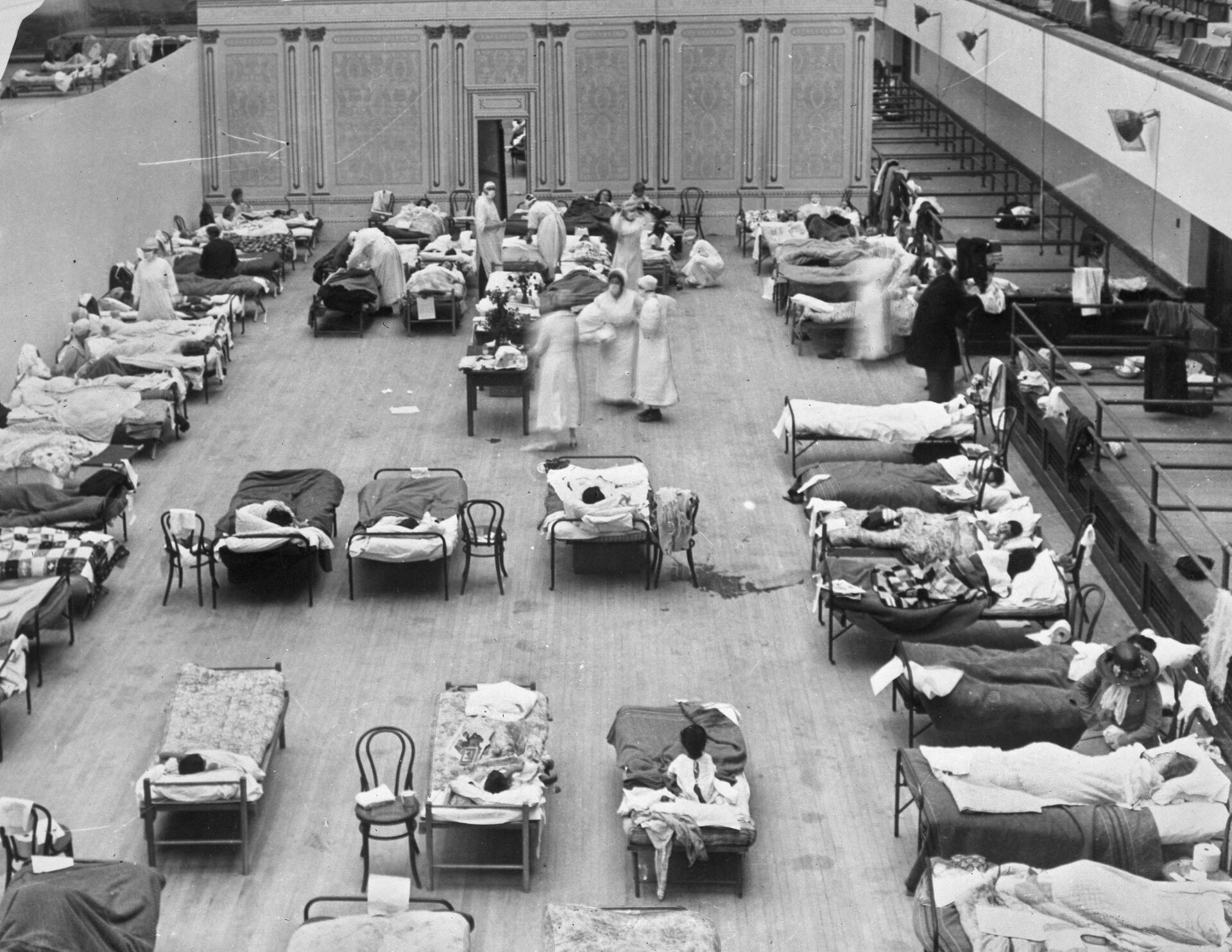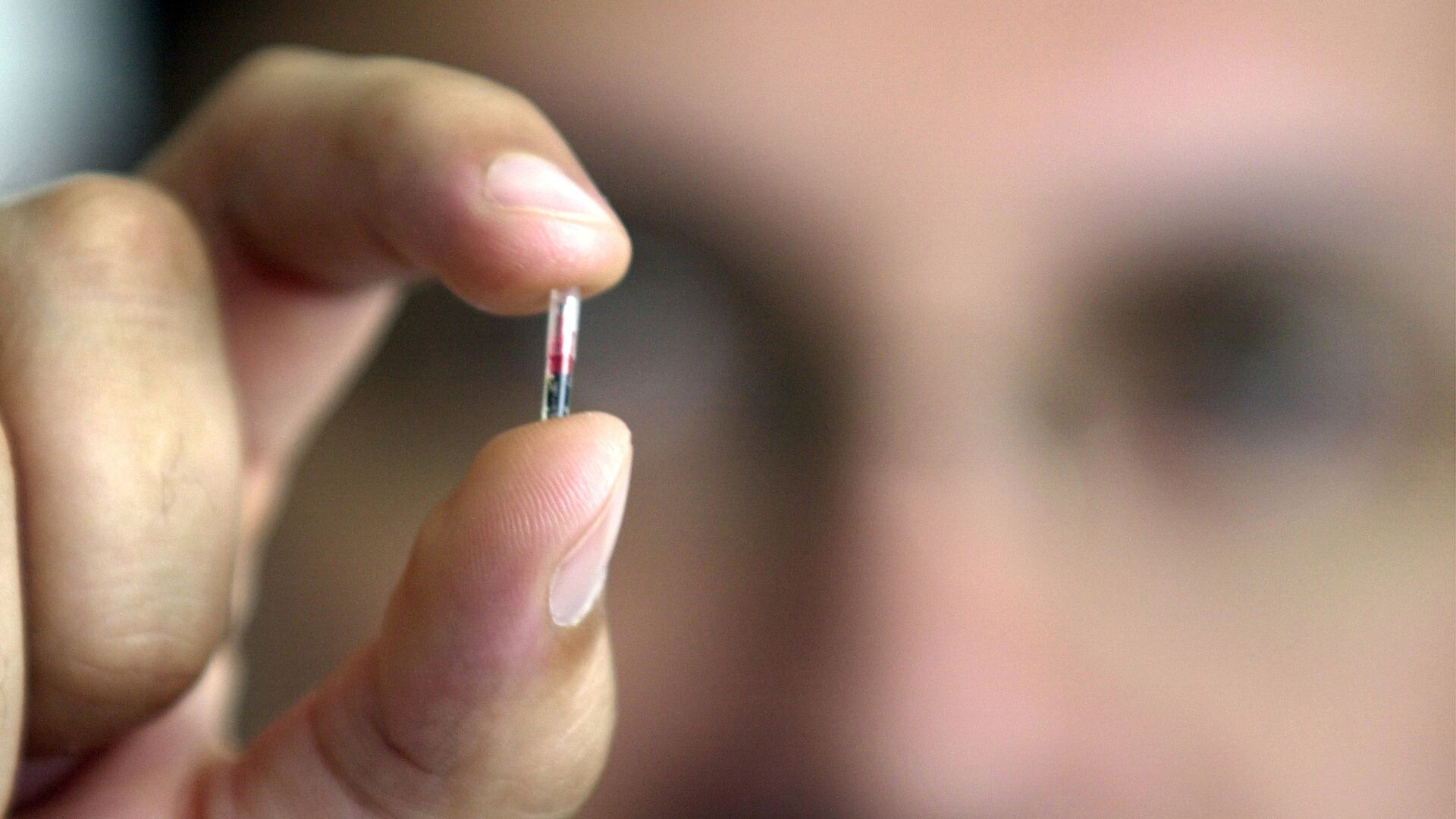Amid the global efforts to stop the spread of the coronavirus pandemic with an unprecedented in scale vaccination roll-out, Pentagon scientists have been working on ambitious ‘sci-fi’-like methods they hope might make COVID-19 the last such deadly health crisis.
Joining CBS’s 60 Minutes on Sunday night, a team from the Defense Advanced Research Projects Agency (DARPA) that reports directly to senior Department of Defense management, opened up on some of their ingenious and what they term ‘revolutionary’ recent inventions.
Thus, a microchip to be inserted under the skin to detect COVID-19 infection in asymptomatic individuals was touted as a breakthrough achievement.
Among some of the current projects that the Defense Advanced Research Projects Agency is developing: a health-monitoring subdermal implant. It’s not a government tracking microchip, but rather a tissue-like gel engineered to continuously test your blood. https://t.co/1UDs9dBNcE pic.twitter.com/Zfph8xQUKC
— 60 Minutes (@60Minutes) April 11, 2021
Retired Colonel Matt Hepburn, formerly an army infectious disease physician with 23 years of active duty experience, who currently leads DARPA's response to the pandemic, demonstrated a tissue-like gel, engineered to “continuously test your blood”.
“You put it underneath your skin and what that tells you is that there are chemical reactions going on inside the body, and that signal means you are going to have symptoms tomorrow,” said Hepburn, who joined DARPA as a program manager in 2013.
The ex-Director of Medical Preparedness on the White House National Security Staff revealed that the scientists were originally inspired to elaborate a "check engine" method after the struggle to stem the coronavirus spread onboard the USS Theodore Roosevelt.
In March 2020, a sailor on the vessel was identified as having the infection, with 1271 crew members (27 percent of the crew) testing positive over several weeks, the majority of whom (77 percent) had no symptoms at the time of laboratory diagnosis. Twenty-three crew members were hospitalized, and 1 died at the time.
“It's like a light… Sailors would get the signal, then self-administer a blood draw and test themselves on site. We can have that information in three to five minutes. As you truncate that time, as you diagnose and treat, what you do is you stop the infection in its tracks,” said Hepburn.
Yet another invention that is being touted by the Pentagon team as “science fact” as opposed to “science fiction” is a filter, placed on a dialysis machine, that is able to remove the virus from the blood.
“You pass it through, and it takes the virus out, and puts the blood back in,” said Hepburn.
"Patient 16", a military spouse, was said to have been subjected to the experimental four-day treatment after being sent to ICU with organ failure and septic shock. Just days later, the patient had reportedly made a full recovery.
The Pentagon has jump-started innovations that might save the lives of critically ill COVID-19 patients. For example, a filter for a dialysis machine removes the virus from the blood and has been used to treat nearly 300 people. https://t.co/EN1fUxY3XP pic.twitter.com/4vflkM7g89
— 60 Minutes (@60Minutes) April 11, 2021
Since then, the US Food and Drug Administration (FDA) has authorised the filter for emergency use. According to Hepburn’s team, the filter has been used to treat nearly 300 critically ill patients.
Looking ahead, the scientists are searching for ways to avert pandemics like the current one from emerging in the future, with another Pentagon agency, the Joint Pathology Institute, studying tissue samples from soldiers and sailors infected with diverse pathogens all over the world.

Tissue samples reportedly taken from patients infected with the Spanish Flu 100 years ago allowed experts from Mount Sinai hospital and the Centers for Disease Control and Prevention (CDC) to recreate the virus in their laboratories in 2005 and manufacture antibodies to it.
“And lo and behold, if we took blood cells out of these-- nearly 100-year-old people, they still had immune cells that were circulating in their body that had reacted to the 1918 influenza. That was one of those moments for me when I just said, "Wow, that-- that's very powerful and interesting," said immunologist and board-certified infectious diseases specialist at Vanderbilt, Dr. James Crowe.
In 2017, Dr. Crowe entered a DARPA grant competition to produce antibody antidotes fast enough to stop a pandemic. The scientist hit upon a method of detecting antibodies in a vial of blood in record time. In line with his technology the required time was reduced from the usual six to 24 months to 78 days.
“20,000 doses in 60 days... Basically, we're talking about engineering antibodies that are so effective that you get near-immediate protection once they're administered and you interrupt transmission in those communities. If you can interrupt it then potentially you can head off the Pandemic," said Dr. Matt Hepburn when describing the program at a TED Talk last year.
The technology developed by Crowe was used to help make antibodies against COVID-19, with the scientists now attempting to speed up the growing of antibodies, which currently takes three weeks for 7,500 doses.
On an even more ambitious scale, Dr Kayvon Modjarrad, spearheading the vaccine effort as director of the emerging infectious diseases branch of the Walter Reed Army Institute of Research (WRAIR) in Silver Spring, Maryland, is currently trying to create a jab against all coronaviruses.
“We have the tools, we have the technology, to do this all right now… Killer viruses that we haven't seen or even imagined, we'll be protected against,” said Modjarrad, who had lead the Army's vaccine efforts for Ebola and the Zika virus, as well as being principal investigator of its campaign against MERS.
The scientist added that the goal was to be able to inoculate people against deadly viruses that have not even been identified.
Hailed as breakthrough they might be, but the novel methods conceived by Pentagon scientists might be regarded with suspicion.
In February, The New York Times reported that military officials told Congress a third of service members have shown reluctance to take the coronavirus vaccine. Concerns were cited that it contained a microchip ostensibly devised to monitor recipients.
Others believed the jab might permanently disable the body’s immune system.


